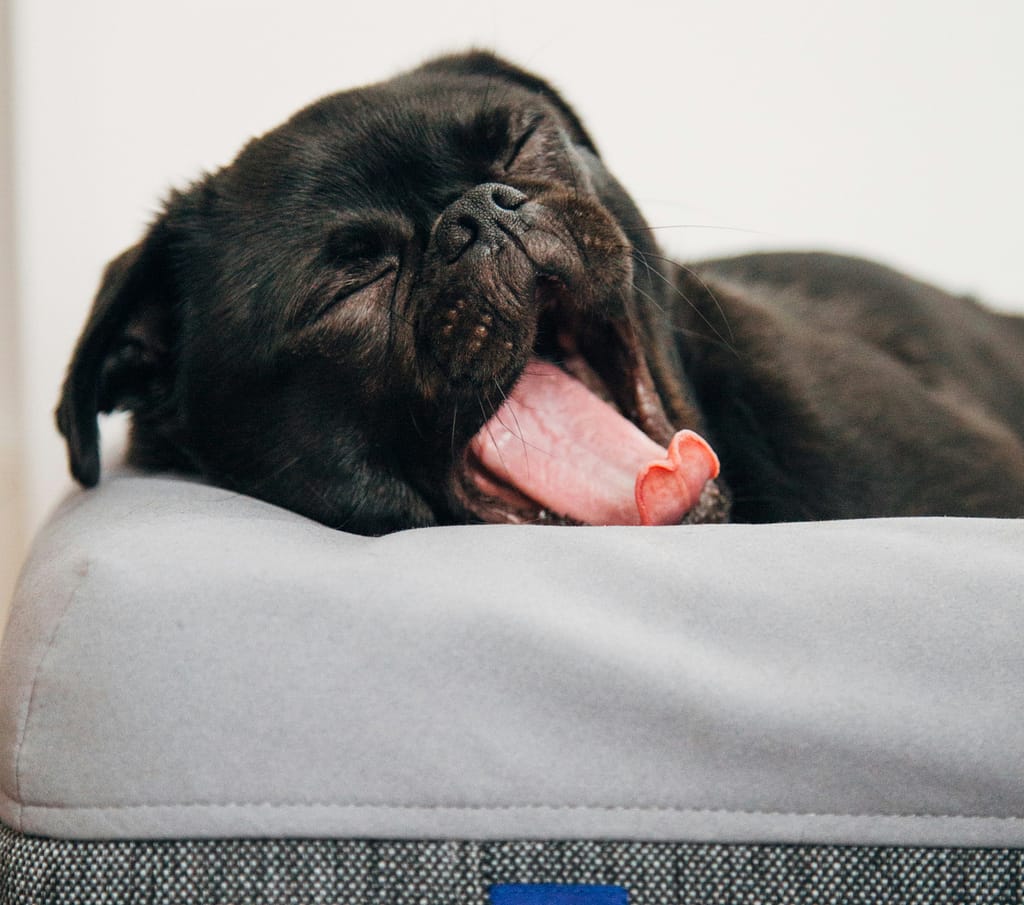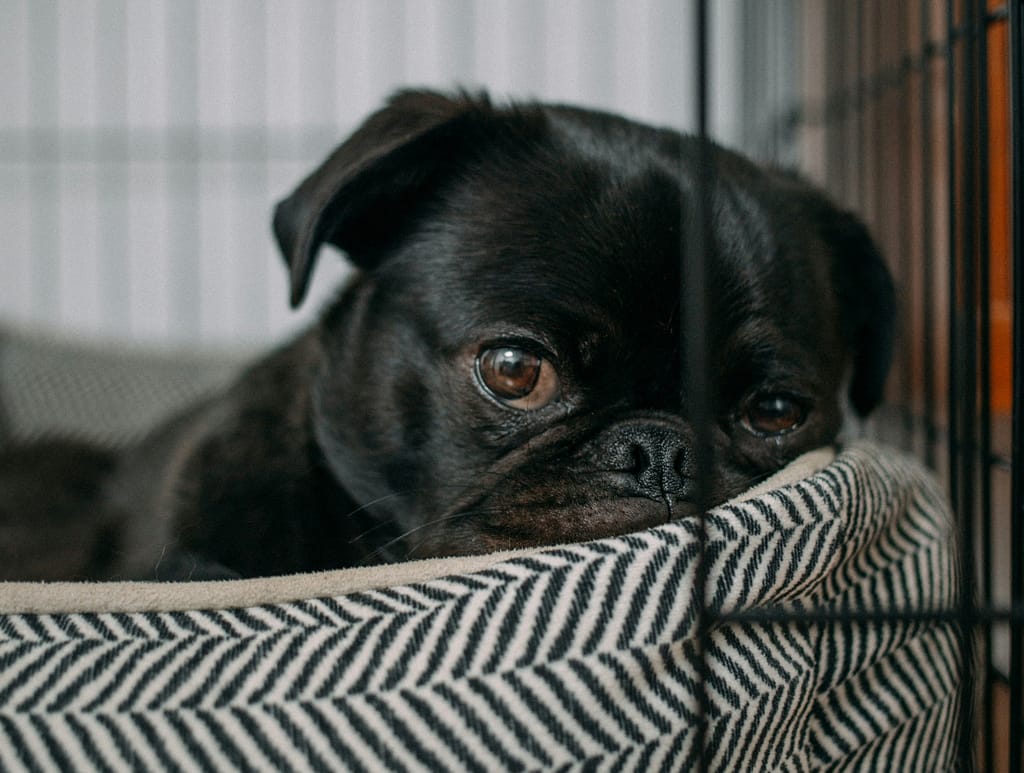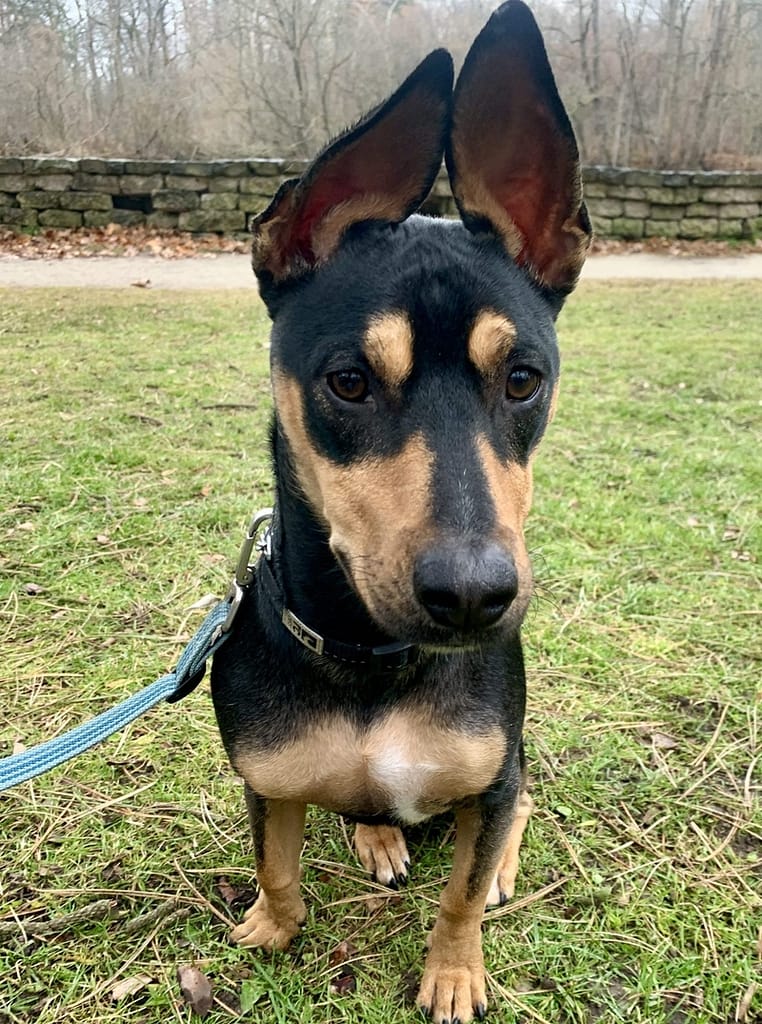When crate training a puppy, the quality of the training provided is far more valuable as compared to the quantity of time spent in the crate. Dogs are known to be den animals, but that, in no way, means that they would take to the crate from day 1. This article aims at guiding you step by step along the way to achieving crate training success.

A step guide to crate training your puppy
Step 1 – Start with an open-door policy
Lack of free will is the biggest hindrance in getting a puppy to love the crate. Often, we end up holding our pups by the collar and putting them inside the crate, even when they are unwilling to go inside. This can create negative association towards the crate.
Engage your pup in activities that would encourage them to enter and exit the crate willingly. These activities include feeding them, playing exciting and interactive games in and around the crate, chewing on edible bones, etc.
Consider adding a command for going in and out of the crate. This cue will eventually make communication easier.
Step 2 – Crate = Disneyland
Your puppy must look at the crate as a place that has all things fun. Let it be a spot where your pup goes inside to find his favorite things in the world like Bully sticks, tasty chews, his meals layered and frozen in a Kong, etc. Consider keeping one or two of their favorite activities such as meals or chewing on bully sticks exclusive to the crate during fixed times of the day. Doing so will make them look forward to being in the crate during those times.
Step 3 – OD on Positive Reinforcement
Dogs repeat the behaviors that we reinforce through attention and rewards. Often times, we end up reinforcing undesirable behaviors like barking, whining etc because we end up giving attention to that; even if it is to stop it.
Positive reinforcement does not just apply to teaching and reinforcing new behvaiors. It must also be used to reward and encourage existing behaviors, even the ones that we haven’t proactively taught the puppy to do.
Being calm in the crate may not be something that you may have actively taught your dog. But, it is important to mark and reward it several times during the day. Positively reinforcing calm behavior is crucial to ensure that it is repeated more often.
Step 4 – Duration building must be gradual
Now comes the tricky part – building duration in the crate. One the most frequently committed mistakes is keeping the puppy inside the crate far too long, far too soon. This is a sure shot way to undo all the hard work that you have put into crate training.
Duration building must be so gradual, that your pup must barely realize that it is happening. Start with just a few minutes, several times a day. As your puppy starts getting more and more comfortable, increase the time span over the next couple of weeks.
Step 5 – Isolation training
Nobody likes feeling isolated, especially not social beings like puppies. The biggest fear dogs have when left alone is whether their humans will come back. To add to this, when we isolate them in the crate for several hours at a stretch, their anxiety only becomes more real.
When you start leaving your dog alone in the crate, make sure to disappear and reappear in short periods of time. Repeating this exercise will assure your pup that you would always come back when you leave. As they start getting more and more comfortable with you leaving, increase the isolation span by a few minutes every time.
Being in the same room as your pup while they are in the crate and interacting with them often during the day can make a world of difference to them and help them calm down.
Step 6 – Optimizing on a calm state of mind
The end goal of investing time and energy in crate training is to help puppies stay alone and settle down. Settling down is easier for puppies when they are either tired or in a naturally calm state of mind. This is when they are less likely to retaliate crate confinement and settle in for a nap quickly.
Consider crating your dog after activities like walks, training sessions, play time etc. Scheduling downtimes in the crate immediately after training sessions make help dogs retain information better and for a longer time.
Step 7 – Take frequent breaks
Misusing and overusing the crate highly undermines its training ability. Puppies have tiny bladders and a fast-filling energy reservoir. Both need to be emptied from time to time. Failure to do so may lead to health issues, destructive behavior and behavioral issues stemming from boredom.
If you are planning to be away for several hours a day, ask a friend to come over or hire a dog walker to ensure your puppy will be let out of the crate frequently for pee/ potty and play breaks.
Step 8 – Alone-time extension
Extending alone time in the crate must be done at a pace that the puppy is comfortable with. Some puppies may stay in the crate for over 4-5 hours at a stretch without a problem, but some may demand to be let out in just a couple of hours. It is crucial to keep this threshold in mind and be well within it.
Attempting to extend alone time drastically may lead to behavioral; issues like isolation distress and anxiety.
Things to avoid while crate training a puppy
Using the crate to punish your dog
How often have you found yourself getting annoyed at your puppy and putting them inside the crate for a time out or as a punishment? If you are guilty of doing this every now and then, you may be setting your pup up for negative association with the crate. This may hamper their willingness to step in and out of the crate willingly.
Yelling at your dog
A puppy constantly barking and whining inside the crate can get on anyone’s nerves. But how we deal with it defines the kind of relationship our puppies will have with the crate. They are only vocalizing to express their distress. If we scold them for it, they will end up feeling frustrated and helpless in the crate.
Letting them be bored
An idle mind is a devil’s workshop. A bored puppy in the crate is a recipe for disaster. It can lead to severe behavioral issues, eventually leading to anxiety. Many a time, puppies may also end up hurting themselves with obsessive and compulsive behaviors inside the crate.
Making a big deal about leaving and coming home
Puppies have a tendency to replicate the energy they are surrounded with. You may have noticed that their energy and excitement levels can go from 0 to 100 in seconds when they see us happy and excited. This can be endearing, but when it comes to a puppy dealing with crate anxiety, come home to them with an overexcited energy may do more harm than good because their happiness to see you combined with their pent up hyper and nervous energy may give rise to anxiety.
Use the crate for several hours at a stretch
Regardless of their size, energy levels, age and ability to settle in the crate, every dog needs a break from being in the crate. Some puppies may be able to go on for a longer time, while some may need breaks more frequently. Make sure to accommodate your puppy’s needs.
Crates can be a blessing in disguise when raising a puppy to be independent, calm, and well mannered. They make excellent training assistants. However, when misused, they can be a bane. The beauty of the crate is truly in the eyes of the beholder.









